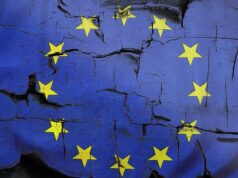„Respect Nuclear Waste“: How do we warn humanity in 100,000 years?
This question may not seem like the most burning, but as more and more nuclear waste is buried underground, many experts are trying to find a way to warn future generations what will be beneath their feet.
And it’s not as easy as it seems.
The problem with the paper
Thinking carefully about where to build nuclear waste storage, clearly marking it and then writing down everything seems to be the obvious solution. Finally, humanity began to document its history as early as 5,500 years ago, and the likelihood that we stop once will seem small.
But the question is: what should we write this crucial information on?
Stone and paper decay. USB sticks and servers too.
Some government agencies, such as ANDRA – the French Agency for the Disposal of Radioactive Waste, have begun to save their data archive on permanent paper.

Also known as acid-free paper due to its composition, it can remain chemically and physically stable over a long period of time, unlike conventional paper that yellows upon exposure to light and / or heat and decays over time.
The agency also made sapphire disks and etched them on one side with platinum. These can contain up to 40,000 pages in image and text and theoretically survive for about two million years.
Problem solved? … Well, not so fast.
After all, language is a living, changing entity. That’s why it took us decades to decipher Egyptian hieroglyphics, for example, and maybe even get a headache when we had to read Old High German masterpieces in school lessons. So who can predict that in 1,000 years French scientists will be able to understand the current form of Molière’s language?
And if that’s not enough, there’s another question: where do we archive the information so that future generations can find it?
The OECD’s NEA Atomic Energy Agency has set up a task force to define the best practices for managing metadata for radioactive waste disposal so that all information is not only stored properly but also easily accessible.
Why it is urgent
The disposal organizations should not be solely responsible for the long-term preservation of information, said Gloria Kwong to Euronews. She is Deputy Director of the Department of Radioactive Waste Management at the Nuclear Energy Assembly (NEA).
„What we have heard from many countries right now is that people have to listen to people every step of the way in developing a waste facility, and social input – and exceptions should also be taken into account, even when designing an information management system „, added her.
The problem, she warned, becomes all the more urgent as some of the workers in the nuclear and waste sectors are close to retirement age.
„Everyone needs to think about how to ensure that this knowledge is passed on to the next generation of assessors, regulators or even waste managers, who will then know how to get the information,“ she said.
But how can we do that without relying on traditional information gathering and the languages we currently use?
Why does the language fail us?
In the mid-1980s, the US Department of Energy asked a group of researchers to work on a knowledge transfer system before building the Waste Isolation Pilot Plant in New Mexico. The existing facility is the only geological repository for radioactive waste in the US.
In a report, researchers around Thomas Sebeok at the University of Indiana recommended the creation of a nuclear priesthood, inspired by the Catholic Church, which should pass on information across generations through „a mix of iconic, index, and symbolic elements“ and „a high level Level of message redundancy „.
Semiotics such as Francoise Bastide of France and Paolo Fabbri of Italy – experts in the exploration of communicative signs and symbols – suggested using genetically modified cats. Certain cats would be selected because they are very popular or even worshiped in some parts of the world, and would then change color if they were near radioactive waste.



